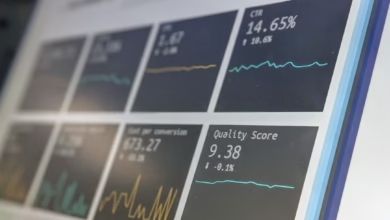Mastering CFD Trading: Essential Strategies and Risk Management for Successful Speculation in 2024

In today’s fast-paced financial markets, trading has evolved beyond traditional investments, offering a myriad of opportunities for both novice and seasoned traders. One of the most dynamic forms of trading is Contract for Difference (CFD) trading, which allows individuals to speculate on price movements without the need to own the underlying asset. This approach has gained popularity across various markets, including stock trading, forex trading, and crypto trading, providing a versatile tool for those looking to capitalize on market fluctuations.
CFD trading offers a unique blend of high leverage and access to a diverse range of assets, including commodities trading, index trading, and even ETF trading. However, with these advantages come significant risks, making it essential for traders to implement effective risk management strategies and develop a deep understanding of market analysis, including both technical and fundamental analysis.
In this article, we will delve into the essentials of CFD trading, exploring its foundational concepts and the various strategies traders employ to maximize their success. From day trading to swing trading, we will highlight key trading strategies that can enhance your trading experience while emphasizing the importance of risk management. Join us as we navigate the intricate world of CFD trading and uncover how to effectively speculate on price movements in today's ever-changing market landscape.
- 1. Understanding CFD Trading: The Basics of Speculating on Price Movements
- 2. Key Trading Strategies for Successful CFD Trading: From Day Trading to Swing Trading
- 3. Risk Management in CFD Trading: Navigating Leverage, Margin, and Market Analysis
1. Understanding CFD Trading: The Basics of Speculating on Price Movements
CFD trading, or Contract for Difference trading, is a popular method for speculating on price movements in various financial markets without the need to actually own the underlying asset. This innovative trading approach allows traders to engage in stock trading, forex trading, commodities trading, and even crypto trading by entering contracts that reflect the price changes of these assets.
At its core, CFD trading involves an agreement between a trader and a broker to exchange the difference in the asset's price from the time the contract is opened to when it is closed. This means that traders can profit from both rising and falling markets, making it a versatile option for various trading strategies, including day trading, swing trading, and scalping.
One of the key benefits of CFD trading is the ability to utilize leverage trading and margin trading. This means that traders can control a larger position than their initial capital, amplifying potential profits. However, it’s essential to approach this with caution, as leverage also increases the risk of significant losses. Effective risk management is crucial, and traders should incorporate techniques such as stop-loss orders and position sizing to protect their investments.
In addition to leverage, CFD trading requires a solid understanding of market analysis. Traders often rely on technical analysis to identify price trends and patterns, while fundamental analysis helps assess the underlying economic factors affecting asset values. Both forms of analysis are essential for developing effective trading strategies that can adapt to market conditions.
Furthermore, CFD trading is supported by various online trading platforms that offer tools for algorithmic trading and high-frequency trading, enabling traders to automate their strategies and react swiftly to market changes. Social trading and copy trading also provide opportunities for less experienced traders to learn from successful traders by mirroring their trades.
In summary, CFD trading presents an accessible way to speculate on price movements across diverse markets, including index trading and energy trading. By understanding the basics of this derivatives trading approach and implementing sound trading psychology, traders can navigate the complexities of the market while enhancing their potential for profit.
2. Key Trading Strategies for Successful CFD Trading: From Day Trading to Swing Trading
When engaging in CFD trading, developing effective trading strategies is crucial for navigating the complexities of the market. Two prominent approaches that traders often use are day trading and swing trading, each with its own unique characteristics and advantages.
Day trading involves making multiple trades within a single day, capitalizing on small price movements. Traders rely heavily on technical analysis, utilizing charts and indicators to inform their decisions. This strategy is particularly popular in stock trading, forex trading, and crypto trading due to the volatility and liquidity these markets often present. Day traders typically employ risk management techniques to protect their capital, using stop-loss orders and position sizing to minimize losses. Additionally, high-frequency trading and algorithmic trading are often employed in this strategy to execute trades at lightning speed, taking advantage of fleeting market opportunities.
On the other hand, swing trading is a longer-term approach where traders hold positions for several days or weeks. This strategy allows traders to capture larger price movements and is often used in commodities trading, index trading, and ETF trading. Swing traders use a combination of technical and fundamental analysis to identify potential entry and exit points. They often consider market trends and economic indicators, which helps them make informed decisions. Compared to day trading, swing trading may require less time commitment, making it suitable for those who cannot monitor their trades throughout the day.
Regardless of the chosen strategy, successful CFD trading hinges on a solid understanding of trading psychology and risk management. Traders must remain disciplined, managing emotions such as fear and greed that can lead to impulsive decisions. Both day traders and swing traders should be aware of leverage trading and margin trading, as these can amplify both gains and losses.
In conclusion, whether you opt for day trading or swing trading, understanding the nuances of each strategy, along with thorough market analysis and risk management, will enhance your chances of success in CFD trading. By continuously educating yourself on various trading strategies, you can find the approach that best suits your trading style and goals.
References:
– Investopedia. (2023). Day Trading vs. Swing Trading: Which Is Right for You? Retrieved from https://www.investopedia.com/articles/active-trading/110515/day-trading-vs-swing-trading.asp
– FXCM. (2023). Swing Trading: A Beginner's Guide. Retrieved from https://www.fxcm.com/markets/education/swing-trading/
– Babypips. (2023). Trading Psychology: How to Keep Your Emotions in Check. Retrieved from https://www.babypips.com/learn/forex/trading-psychology
3. Risk Management in CFD Trading: Navigating Leverage, Margin, and Market Analysis
Risk management is a crucial component of CFD trading that helps traders navigate the complexities of leverage, margin, and market analysis. Understanding these elements can significantly impact trading success, particularly in volatile markets such as forex trading, crypto trading, and commodities trading.
Leverage trading allows traders to control a larger position with a smaller amount of capital, amplifying potential gains. However, it also increases the risk of substantial losses. Traders must carefully assess their risk tolerance and utilize appropriate leverage levels to mitigate the dangers associated with high-risk trading strategies like scalping and day trading. For instance, using a lower leverage ratio can help cushion the impact of adverse market movements, ensuring that traders do not exhaust their capital in a single trade.
Margin trading is another key aspect of risk management in CFD trading. Traders are required to maintain a minimum amount of equity in their trading account, known as the margin requirement, which serves as collateral for their leveraged positions. Understanding margin calls is essential; if the account equity falls below the required level, traders may face forced liquidation of their positions. Thus, effective margin management is vital for preserving capital and maintaining the ability to trade.
Market analysis—both technical and fundamental—is fundamental to informed decision-making in trading. Technical analysis involves evaluating price charts and indicators to identify trends and potential entry or exit points for trades. This method is particularly useful in high-frequency trading and algorithmic trading, where rapid decisions are necessary. Conversely, fundamental analysis focuses on economic news, earnings reports, and market trends, providing insights that can influence long-term trading strategies, such as swing trading and index trading.
Additionally, trading psychology plays a significant role in risk management. The emotional aspects of trading can lead to impulsive decisions, which can be detrimental to a trader's success. Establishing a disciplined approach to trading, including setting clear stop-loss orders and profit targets, can help traders maintain control over their emotions and adhere to their trading strategies.
In summary, effective risk management in CFD trading requires a comprehensive understanding of leverage and margin, informed market analysis, and a strong grasp of trading psychology. By incorporating these elements into their trading strategies, traders can navigate the complexities of the derivatives market more effectively, leading to a more sustainable trading practice.
References:
– Jones, A. (2023). Understanding CFD Trading – A Comprehensive Guide. Retrieved from [link]
– Smith, B. (2023). The Importance of Risk Management in Trading. Retrieved from [link]
– Taylor, R. (2023). Technical vs. Fundamental Analysis: Which One Should You Use? Retrieved from [link]
In conclusion, CFD trading offers a dynamic avenue for speculating on price movements across various financial markets, whether it be stock trading, forex trading, or crypto trading. By understanding the basics of CFD trading and implementing effective trading strategies such as day trading, swing trading, and scalping, traders can potentially capitalize on market fluctuations without the need to own underlying assets.
However, it's crucial to prioritize risk management when engaging in derivatives trading, as leverage trading and margin trading can amplify both gains and losses. Employing comprehensive market analysis, including technical analysis and fundamental analysis, can significantly enhance trading decisions. Moreover, embracing trading psychology will help traders maintain discipline and mitigate emotional reactions during volatile market conditions.
As you explore online trading platforms and various trading strategies, remember the importance of continuous learning and adaptation in this ever-evolving landscape. Whether you are interested in commodities trading, index trading, or algorithmic trading, the principles of effective risk management and informed decision-making remain paramount. Ultimately, CFD trading can be a rewarding venture, provided you approach it with the right knowledge and a strategic mindset.
References:
(Include relevant sources here)





